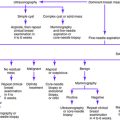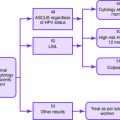Chapter 23 LIVER DISEASE IN PREGNANCY
The most common liver diseases during pregnancy are preeclampsia and viral hepatitis. Less common causes that are specific to pregnancy include intrahepatic cholestasis of pregnancy, acute fatty liver of pregnancy, Budd-Chiari syndrome, liver hematoma and rupture, and liver infarction.
Causes of Liver Disease in Pregnancy
Key Historical Features
✓ Facial and hand swelling (preeclampsia)
✓ Fever (cholangitis, acute viral hepatitis)
✓ Pruritus (intrahepatic cholestasis of pregnancy, primary biliary cirrhosis)
✓ Decreased appetite and fatigue (chronic liver disease)
✓ Medical history, especially history of the following:
✓ Surgical history, especially previous biliary surgery
✓ Social history, including alcohol use, drug use, and sexual history
Key Physical Findings
✓ Examination for evidence of chronic liver disease: jaundice, scleral icterus, muscle mass loss, ascites, palmar erythema, spider angiomas, caput medusa, Dupuytren contracture, clubbing of digits
✓ Abdominal examination for hepatomegaly, splenomegaly, abdominal tenderness, or ascites
✓ Skin examination for excoriations that indicate pruritus
✓ Neurologic examination for evidence of hepatic encephalopathy
Suggested Work-Up
| ALT, AST, bilirubin, and alkaline phosphatase measurements | To determine whether the liver disease is caused by hepatocyte damage or cholestasis |
| Serum bile acid measurements | To evaluate for intrahepatic cholestasis of pregnancy |
| Urinalysis | To evaluate for proteinuria |
| Complete blood cell count | To evaluate for anemia and thrombocytopenia, which are associated with liver disease |
| Blood urea nitrogen (BUN) and creatinine measurement | To evaluate for renal disease |
| Partial thromboplastin time (PTT), PT, and international normalized ratio (INR) | To evaluate for coagulopathy |
| Albumin measurement | To evaluate liver synthetic function |
| Serum electrolyte measurements | To evaluate for electrolyte abnormalities |
| Serum blood glucose measurement | To evaluate for hypo- or hyperglycemia |
Additional Work-Up
| Right upper quadrant ultrasonography | To evaluate the liver and gallbladder |
| Test for hepatitis A immunoglobulin M antibodies | To evaluate for acute hepatitis A infection |
| Test for hepatitis B surface antigen | To evaluate for hepatitis B infection (usually performed as a routine part of prenatal screening) |
| Test for hepatitis B core antibody | To evaluate for hepatitis B infection |
| Test for hepatitis C antibody | To evaluate for hepatitis C infection |
| Twenty-four-hour urine test for total protein | To evaluate for proteinuria (if preeclampsia is suspected) |
| Uric acid measurement | Elevated level is associated with preeclampsia |
| Lactate dehydrogenase measurement | Elevated level may be a sign of hemolysis associated with preeclampsia |
| Test for antimitochondrial antibody | To evaluate for primary biliary cirrhosis |
| Test for antinuclear antibody (ANA) and smooth muscle antibody | To evaluate for autoimmune hepatitis |
Benjaminov FS, Heathcote J. Liver disease in pregnancy. Am J Gastroenterol. 2004;99:2478-2479.
Cappell MS. Hepatic and gastrointestinal diseases. In: Gabbe SG, Niebyl JR, Simpson JL, editors. Obstetrics: Normal and Problem Pregnancies. 5th. New York: Churchill Livingstone; 2007:1105-1115.
Hunt CM, Sharara AI. Liver disease in pregnancy. Am Fam Physician. 1999;59:829-836.
Schutt VA, Minuk GY. Liver diseases unique to pregnancy. Best Pract Res Clin Gastroenterol. 2007;21:771-792.
Teoh NC, Farrell GC. Liver disease caused by drugs. In: Feldman M, Friedman LS, Brandt LJ, editors. Sleisenger & Fordtran’s Gastrointestinal and Liver Disease. 8th. Philadelphia: Elsevier; 2006:1807-1843.




